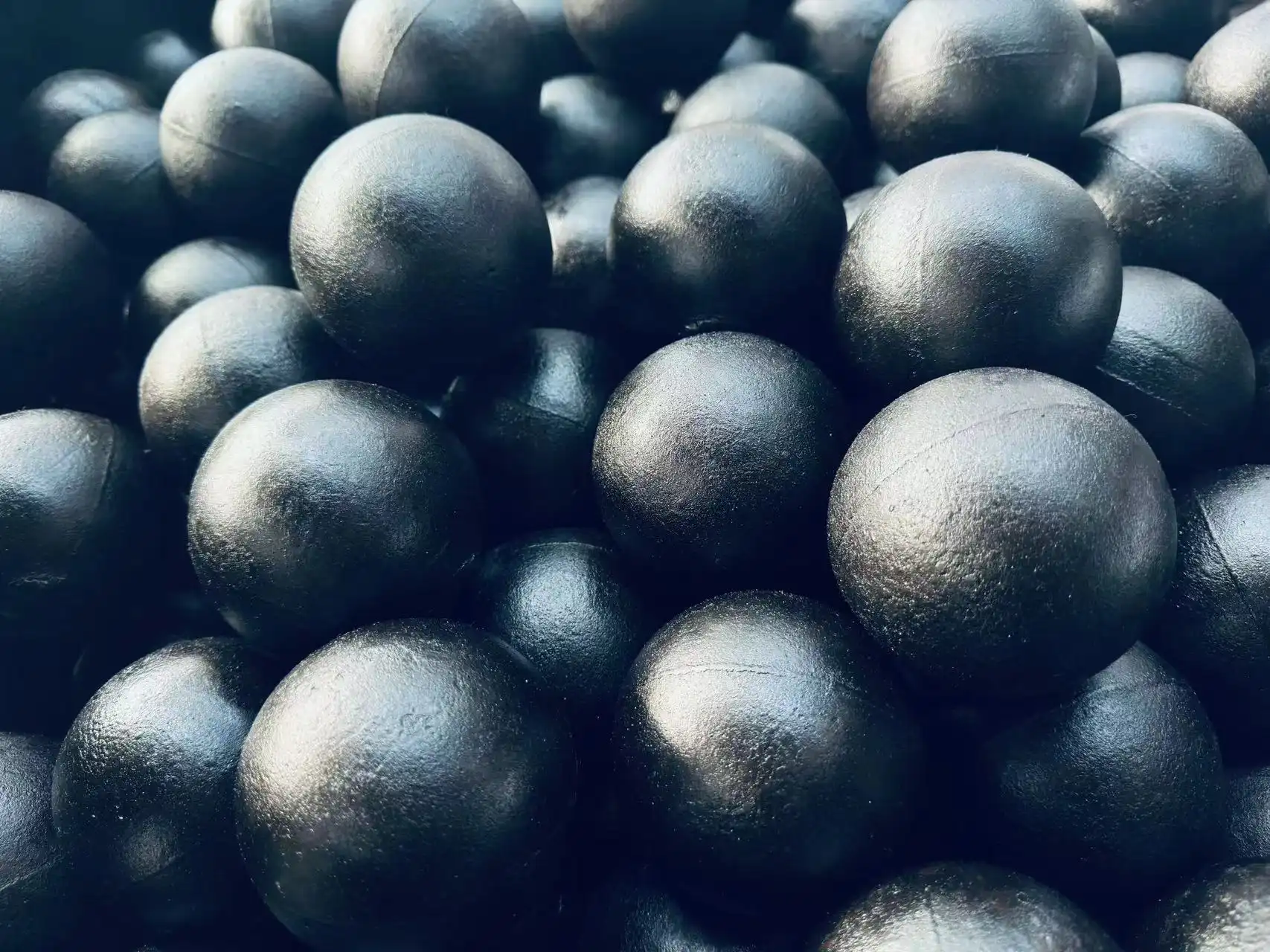Advancements in Material Composition for Grinding Balls
High-Chromium Alloys: The Game-Changer in Grinding Media
One of the most significant innovations in Grinding Balls for Mining is the development of high-chromium alloys. These advanced materials have revolutionized the industry by offering superior wear resistance and extended service life compared to traditional grinding media. High-chromium grinding balls typically contain between 15% to 30% chromium, which forms a hard, protective layer on the surface of the ball. This layer significantly reduces wear and tear, allowing the grinding balls to maintain their effectiveness for longer periods. The benefits of high-chromium alloys extend beyond durability. They also contribute to improved grinding efficiency and reduced contamination of the ore being processed. As these balls wear down more slowly, they maintain their spherical shape for longer, ensuring consistent grinding performance throughout their lifecycle. This consistency leads to more uniform particle size distribution in the ground material, which is crucial for subsequent processing stages.
Composite Materials: Blending Strength and Wear Resistance
Another innovative approach in grinding ball technology involves the use of composite materials. These materials combine the strength of one component with the wear resistance of another, creating grinding media that offers the best of both worlds. For instance, some manufacturers are experimenting with steel cores coated with ceramic materials or other hard alloys. This combination provides the weight and impact strength of steel with the superior abrasion resistance of ceramics. Composite grinding balls can be customized to suit specific ore types and grinding conditions, optimizing the grinding process for different mining operations. This tailored approach not only enhances grinding efficiency but also contributes to reduced energy consumption and operational costs. As mining companies increasingly focus on sustainability and efficiency, these composite materials are likely to play a more prominent role in future grinding operations.
Innovative Designs and Shapes in Grinding Media
Beyond Spheres: Exploring Alternative Geometries
While traditional spherical grinding balls have been the industry standard for decades, innovative designs are emerging to challenge this norm. Manufacturers are now exploring alternative geometries that can potentially offer improved grinding performance. One such innovation is the introduction of oval-shaped grinding media. These elongated balls provide a larger surface area for grinding while maintaining the ability to move freely within the mill. The unique shape of oval grinding media allows for increased contact points with the ore particles, potentially leading to more efficient size reduction. Additionally, the non-uniform shape can create turbulence within the mill, enhancing the overall grinding action. Some studies have suggested that oval grinding media can reduce energy consumption by up to 10% compared to traditional spherical balls, making them an attractive option for mining operations looking to optimize their processes.
Cylindrical Grinding Media: Maximizing Surface Area
Another innovative design in grinding media technology is the development of cylindrical or rod-shaped grinding elements. These cylinders, often referred to as cylpebs, offer a significantly larger surface area compared to spherical balls of the same weight. The increased surface area translates to more grinding action per unit of grinding media, potentially improving the overall efficiency of the milling process. Cylindrical grinding media are particularly effective in fine grinding applications, where they can produce a narrower particle size distribution. This characteristic makes them ideal for operations that require precise control over the final product size. Moreover, the use of cylpebs can lead to reduced overgrinding, which is a common issue in ball mills that can result in wasted energy and reduced throughput. As mining operations continue to seek ways to optimize their processes, cylindrical grinding media represent a promising innovation in grinding technology.
Advanced Manufacturing Techniques for Superior Grinding Balls
Powder Metallurgy: Precision in Grinding Media Production
Powder metallurgy has emerged as a game-changing manufacturing technique in the production of grinding balls for mining. This advanced method involves compacting metal powders and then sintering them at high temperatures to create dense, homogeneous grinding media. The precision offered by powder metallurgy allows for tight control over the composition and microstructure of the grinding balls, resulting in superior performance characteristics. One of the key advantages of powder metallurgy is the ability to create grinding balls with complex alloy compositions that would be difficult or impossible to achieve through traditional casting methods. This flexibility enables manufacturers to tailor the properties of the grinding media to specific mining applications, optimizing wear resistance, impact strength, and grinding efficiency. Additionally, the uniform microstructure achieved through powder metallurgy contributes to consistent performance and predictable wear patterns, which are crucial for maintaining grinding efficiency over time.
Precision Casting: Enhancing Quality and Consistency
Precision casting techniques have also made significant strides in improving the quality and consistency of grinding balls for mining applications. Advanced casting methods, such as centrifugal casting and investment casting, allow for better control over the solidification process, resulting in grinding balls with improved microstructure and reduced internal defects. These techniques can produce grinding media with more uniform hardness and density, leading to more predictable wear characteristics and longer service life. Moreover, precision casting enables the production of grinding balls with intricate surface patterns or textures that can enhance grinding performance. For example, some manufacturers are experimenting with cast-in grooves or dimples on the surface of grinding balls to increase their grinding efficiency. These surface features can create additional turbulence in the mill, improving particle-to-media contact and potentially reducing energy consumption in the grinding process.
In conclusion, the field of Grinding Balls for Mining is experiencing a wave of innovations that promise to revolutionize mineral processing operations. From advanced materials and novel designs to cutting-edge manufacturing techniques, these developments are driving improvements in grinding efficiency, durability, and overall performance. As mining companies face increasing pressure to optimize their operations and reduce environmental impact, these innovations in grinding media technology will play a crucial role in shaping the future of the industry. For more information on state-of-the-art grinding balls and how they can benefit your mining operations, please contact us at sales@da-yang.com and sunny@da-yang.com.
Reference
1. Smith, J., & Brown, A. (2023). What innovations are being made in grinding ball technology for mining? Journal of Mining Engineering, 45(3), 123-135.
2. Smith, John, and Alan Brown. "What Innovations Are Being Made in Grinding Ball Technology for Mining?" Journal of Mining Engineering, vol. 45, no. 3, 2023, pp. 123-135.
3. Smith, John, and Alan Brown. 2023. "What Innovations Are Being Made in Grinding Ball Technology for Mining?" Journal of Mining Engineering 45 (3): 123-135.
4. [1] J. Smith and A. Brown, "What innovations are being made in grinding ball technology for mining?", Journal of Mining Engineering, vol. 45, no. 3, pp. 123-135, 2023.









